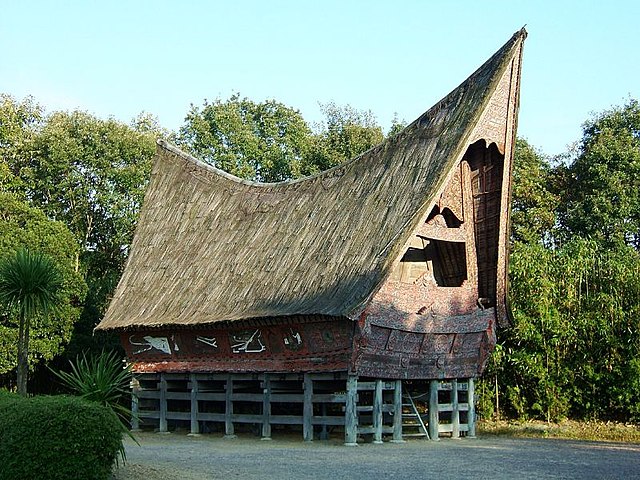Vernacular architecture is building done outside any academic tradition, and without professional guidance. It is not a particular architectural movement or style, but rather a broad category, encompassing a wide range and variety of building types, with differing methods of construction, from around the world, both historical and extant and classical and modern. Vernacular architecture constitutes 95% of the world's built environment, as estimated in 1995 by Amos Rapoport, as measured against the small percentage of new buildings every year designed by architects and built by engineers.
Minangkabau architecture from West Sumatra, Indonesia, inspired by the shape of a buffalo horn
English vernacular building, 16th-century half-timbering and later buildings, in the village of Lavenham, Suffolk
A pair of single 1920s shotgun houses in the Campground Historic District of Mobile, Alabama
A traditional Batak house, Indonesia, in ancient Austronesian architectural style
Environmentally sustainable design is the philosophy of designing physical objects, the built environment, and services to comply with the principles of ecological sustainability and also aimed at improving the health and comfort of occupants in a building.
Sustainable design seeks to reduce negative impacts on the environment, the health and well-being of building occupants, thereby improving building performance. The basic objectives of sustainability are to reduce the consumption of non-renewable resources, minimize waste, and create healthy, productive environments.
The California Academy of Sciences, San Francisco, California, is a sustainable building designed by Renzo Piano. It opened on September 27, 2008
One Central Park, Sydney
Sustainable building design
A 35,003 litre rainwater harvesting tank in Kerala








